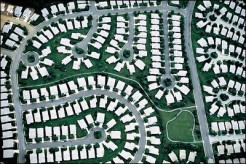What do lobsters and cul-de-sacs have in common?
/I like it when perceived extravagances and status symbols are proven to be not so extravagant and rather artificial. A century ago, lobsters were so plentiful and inexpensive that they were routinely fed to domestic servants and other low-wage workers. The servants detested these “cockroaches of the sea” so much that their employment agreements often demanded that lobster be served no more than twice a week.
Until recently, lobster was considered an ill-tasting, ugly-to-look-at, impossible-to-eat food item only suitable for the hired help.
Then, thanks to decades of over-fishing, lobster populations plummeted.
As the scarcity of lobsters rose, prices increased, and before long, the “cockroach of the sea” was considered a delicacy.
Not because they tasted better or were any more appealing, but simply because they cost more.
I do not eat lobster. I don’t mind the taste of lobster but find the process of eating a lobster slightly disgusting and thoroughly unrewarding.
A lot of effort for a small amount of average-tasting food.
Any food that is normally dunked in butter before eaten cannot be that good.
But when I hear people extol the virtue of lobster, I cannot help but think of how their love for this food is not based on the food itself but the time in which they live and the modern-day price of the product.
Nothing more.
I recently read a piece about cul-de-sacs that gives me a similar pleasure.
The cul-de-sac has long been viewed as a suburban ideal, the place where your children can play in the street in relative safety and neighborhoods can once again become the close-knit communities that they once appeared to be on black-and-white television.
Homes located within cul-de-sacs are almost always priced higher than those in less idealized locations, and many home buyers specifically target cul-de-sacs when looking to purchase a home.
And yet data compiled from studies on traffic patterns and the frequency of accidents shows that cul-de-sacs aren’t as safe as you might think.
“A lot of people feel that they want to live in a cul-de-sac, they feel like it’s a safer place to be,” Marshall says. “The reality is yes, you’re safer – if you never leave your cul-de-sac. But if you actually move around town like a normal person, your town as a whole is much more dangerous.”
It turns out that if you live in a one-cul-de-sac town, you’re probably okay.
But if the suburban sprawl of your hometown is littered with cul-de-sacs and similarly designed streets, you’re children are in more danger than those living in the Bronx, at least when it comes to traffic.
Perceived extravagance fails again.

